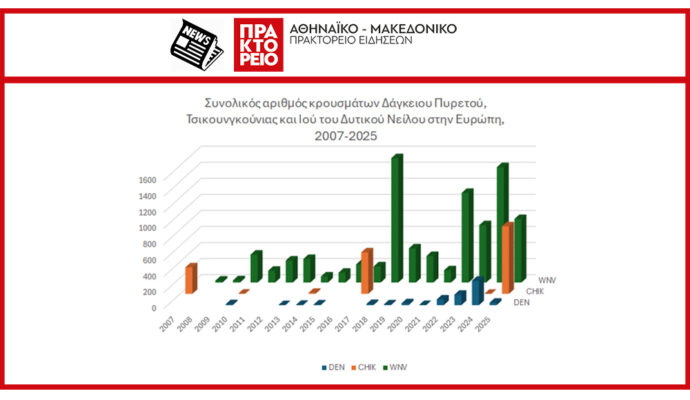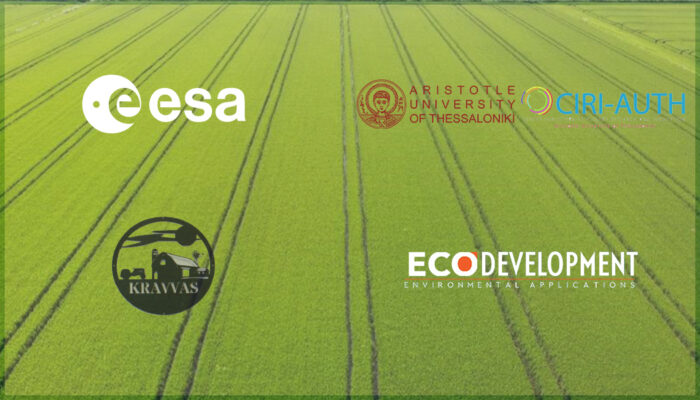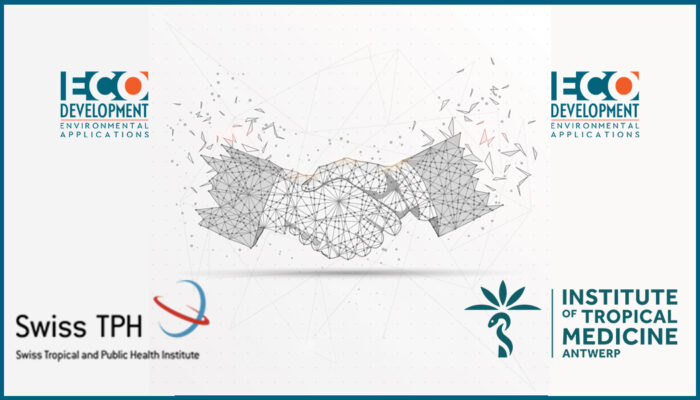Ecodevelopment, in the context of the multi-year cooperation with the Region of Thessaly and the Hellenic CDC, has carried out a series of entomological and epidemiological monitoring actions to deal with West Nile Virus (WNV) infection after the phenomenon Daniel. These actions include weekly collection of thriving mosquitoes from 50 fixed locations throughout the Region of Thessaly, identification and biochemical analyzes for the detection of West Nile Virus in thriving mosquitoes, carrying out approximately 1000 samplings per week to record and control mosquito larvae in the outbreak network reproduction of Ecodevelopment, and finally urgent larviciding actions. The field data recordings and analyzes to date, combined with five years of historical data that we maintain on a special electronic platform (ebite), are summarized as follows:
- For the floodplain mosquito species Aedes caspius (which is not involved in West Nile virus transmission), the abundance of mosquito larvae was recorded twentyfold and the abundance of mature mosquitoes tenfold, compared to the pre-Daniel period. This results in significant nuisance in places.
- In contrast for Culex pipiens (which is involved in the transmission of West Nile Virus), there is now an increase in mosquito larvae, which has not yet translated into an increase in the population of the adult mosquitoes. Populations of Culex pipiens currently recorded are close to the five-year average.
- This year, in the months of July and August in the Larissa and Karditsa, the mosquito positivity rate for WNV was 1/300 thriving (positivity very high, in relation to the corresponding measured positivity in the Region of Central Macedonia which was 1/500 thriving) , while after Daniel, the first PCR readings give zero positivity in the collected mosquito samples.
In conclusion, today for the Region of Thessaly:
- The concentrations of thriving Culex pipiens are comparable to those of the last five years.
- The infectious cycle in Culex pipiens mosquitoes has been broken.
- We are at the end of the period of circulation of the pathogen in mosquitoes, and there will be no heat or other suitable conditions for their re-infection.
- A corresponding reduced epidemiological risk was recorded in June 2020, after the severe weather phenomenon Janos in the Karditsa, and in similar flooding phenomena in the Region of Central Macedonia, which has corresponding levels of West Nile Virus endemicity.
Finally, because the recording of human cases of WNV in the country continues to this day, although in a clearly smaller number, we remain alert and ready, continuing in cooperation with the General Directorate of Public Health of the Region of Thessaly and following the circulars of the Ministry of Health, the implementation of the plan dealing with mosquitoes to protect the health of the residents of Thessaly.















